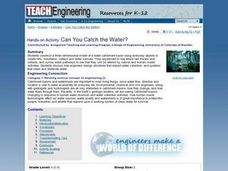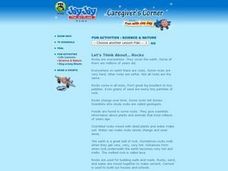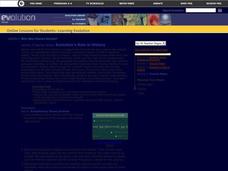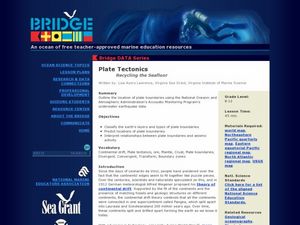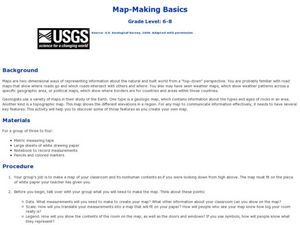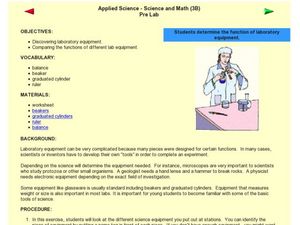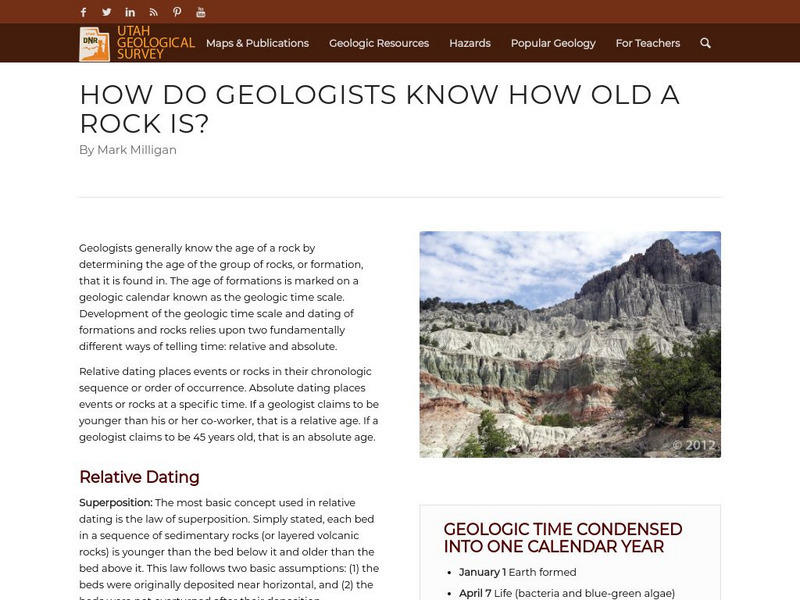Curated OER
Can You Catch the Water?
Students work together to construct a model of a water catchment basin. They survey water patterns and complete experiments to see where rain travels and collects. They discover how engineers design structures that help with drainage.
Curated OER
Math: Counting on Others
Students use counting skills to decide who wins the Classroom Winter Games. They use numeral writing and tally marks to keep score. Students have an opportunity to pretend they are competing for medals in the Winter Games while using...
Curated OER
Creating a Neighborhood Timeline
Students research information about their neighborhoods. Uncovering facts about geology and Native Americans, they examine how the neighborhood has evolved over time. They work together to create a timeline of specific events.
Curated OER
Dizzy Heights
Fifth graders explore ways to measure the height of an inaccessible object. They measure lengths using a tape measure or ruler. Students measure angles using a protractor and estimate heights.
Curated OER
Careers in Mining
Students study about natural resources and the decreasing amount. They observe the need for trained scientists and engineers. Finally, they take a small test to determine the areas of science they find most interesting.
Curated OER
Who was Charles Darwin?
Students trace major developments in the history of evolutionary science. They
discuss the connections between major events in world history and major events in the development of evolutionary thought by creating timelines.
Curated OER
It's All In The Rocks
Students think critically to determine fact or inference when examining sedimentary layers with embedded fossils. Geology and evolutionary biology are introduced. They individually write a story about various diagrams and share their...
Curated OER
Careers in Mining
Students examine the different careers related to mining. They watch and discuss a video, take a survey of interests and discuss the mining careers that they might be interested in, and create a drawing of themselves doing one of the...
Curated OER
Absolute Ages of Rocks
In this rocks worksheet, students review the process of absolute dating of rocks and compare it to the relative dating process. This worksheet has 16 fill in the blank questions.
Curated OER
Who Am I? Famous Scientists
In this scientists worksheet, students read a brief synopsis of a scientist, then try to identify the person, 12 total. Worksheet contains links to additional activities.
Curated OER
Plate Tectonics: Recycling the Seafloor
Students classify earth's layers and plates using Ocean Seismicity data. In this plate tectonics lesson, students outline where the plate boundaries are on the world map. They then compare these predicted boundaries with USGS map of the...
Curated OER
Gilbert Munger Lesson Plan Ideas
Students read the biography of Gilbert Munger and analyze art that reflects the beauty of nature. In this art analysis lesson, students view a realistic image of Salt Lake City and lake over 100 years ago.
Curated OER
Map-Making Basics
Students study maps. For this geography and art lesson, students create their own map of the classroom.
Curated OER
Evolution
Pupils create a timeline on the history of evolution. In this biology lesson, students research their assigned scientist's contribution to evolution theory. They write a three-paragraph analysis about the timeline.
Curated OER
Cycles Review
Eighth graders discuss the four major cycles of matter. In this general science lesson, 8th graders decide which of the four is the most important. They share their opinion in class.
Curated OER
Applied Science -- Science and Math (3B) Pre Lab
Set up stations around your science lab to introduce youngsters to different equipment. They examine a beaker, graduated cylinder, ruler, balance, and thermometer. The said worksheet is not included, but you will find a few useful tips...
Curated OER
Human and Natural Made
Students compare human and natural made objects. In this science lesson, students identify items that are made by humans and items that are natural.
Curated OER
Leaving Home
Students explain the importance of larval dispersal and retention to populations. They collect data on organisms and examine it.
Curated OER
Super Scientists Code
In this science worksheet, students use the key code on the right to unscramble each of the scientists. They also match each of the scientists found to their correct description.
Curated OER
Dinosaurs
In this earth science worksheet, students match each vocabulary term, that names something specific related to earth science, with its correct description found in the right column. They identify different types of scientists and various...
Curated OER
World of Dinosaurs Game
In this science worksheet, students write each of the vocabulary terms that relate to earth science listed in the spaces of the bingo card provided. Then they use the clues at the bottom of the sheet to match to its correct science term...
Curated OER
1Word and Letter Match Puzzle
In this word and letter match instructional activity, learners match groups of 3 letters to words that contain each set. A reference web site is given for additional activities.
American Museum of Natural History
American Museum of Natural History: O Logy: Meet the Geologist: Ed Mathez
This video interview with geologist Ed Mathez provides insights into his research interests, his career preparation, and a range of geology-related topics.
Other
Utah Geological Survey: How Do Geologists Know How Old a Rock Is?
Geologists generally know the age of a rock by determining the age of the group of rocks, or formation, that it is found in. The age of formations is marked on a geologic calendar known as the geologic time scale. Development of the...
Other popular searches
- Be a Geologist
- Petroleum Geologist
- Geologist and Density
- Ask a Geologist
- Geologist and Earthquakes
- Planetary Geologists
- Geologists Earthquakes
- What Is a Geologist
- Hydro Geologist
- Geologists Caves
- Photo Geologist
- Ask a Geologist Interview
